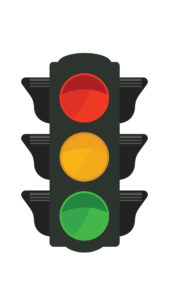![]()
![]()
![]()
 You are in a restaurant, relaxing after an delicious lunch with friends. Looking at the time, you realize you’ll need to get going soon or risk being late for your next meeting. What do you do? That’s right–you raise your hand to get the waiter’s / waitress’s attention.
You are in a restaurant, relaxing after an delicious lunch with friends. Looking at the time, you realize you’ll need to get going soon or risk being late for your next meeting. What do you do? That’s right–you raise your hand to get the waiter’s / waitress’s attention.
Okay. Next scenario: You are walking down the street and notice someone’s shoelace is untied. What do you do? Why, you draw it to the person’s attention because there is a risk of the person tripping and getting hurt: You tap them on the shoulder and/or wave your hand a bit and/or make sounds like “Hey” and “Excuse me”.
In both of the above scenarios, there was risk; and, almost without thinking, we did something to draw attention to the risk for awareness so someone could do something about it.
Why, then, are project managers so reluctant to change their project status to yellow or red?
Yellow and red are your friends. They are powerful tools that you can use to get your stakeholders’ attention; to send clear signals that risk is on the rise, there is trouble ahead, and action is required before it’s too late. Yellow does not mean you are failing. Red does not mean you are incompetent. On the contrary, judicious use of these signals is an indication of project management maturity and nurtures relationships with stakeholders as it promotes confidence that you can be relied-on raise your hand for help before things go completely off the rails.
The key term in the above is judicious. Excessive application of yellow and red paint will devalue their impact. As the term implies, it’s a judgment call. Define, up front with your stakeholders, the circumstances under which you will flag the project yellow and red. These can be formal (e.g., based on probability and impact scores) or informal. The key is to use the right colour at the right time to make sure your stakeholders get the right message when you raise your hand.
Find more tips like this one at Professional Services Plus



